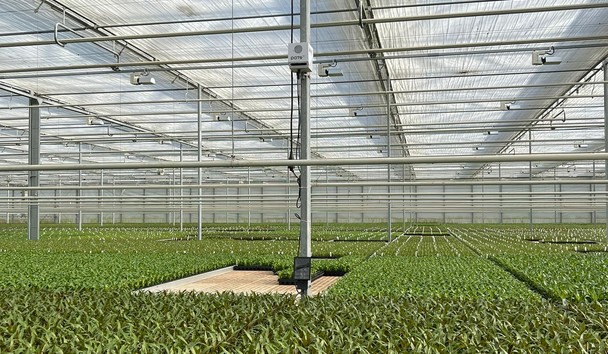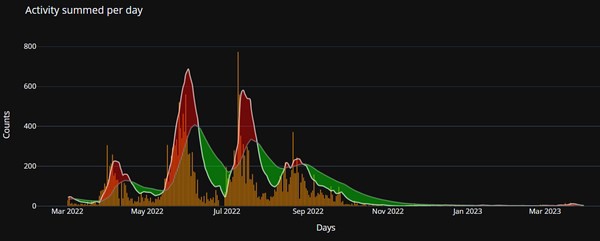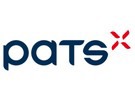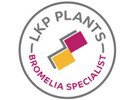LKP Plants in Moerkapelle is, with 8 hectares, one of the largest and most modern Bromelia nurseries in the Netherlands. The company is fully committed to automation and digitization and has invested heavily in automatic cultivation systems in recent years. In addition, the company is undergoing major renovations to make their greenhouses more sustainable. This sustainability is also reflected in their long-standing, fully biological cultivation. Only natural enemies are used against various pest insects, including tricky moths and caterpillars that can cause a lot of damage.

PATS-C overlooking young Bromeliads
At the end of 2021, LKP started using the PATS-C system in one of their greenhouses. With this system, Marco Koolhaas, co-owner, and Bas Krens, cultivation specialist, have automated and digitized the monitoring of moth pests. Bas: "I walk through the crop daily and quickly notice any deviations. But for the moth pest population development, I now fully rely on the PATS-C system. We have also stopped inspecting the insect lamps, which were also difficult to inspect regularly due to our cultivation system."
So in terms of pest monitoring, LKP is fully committed to automation. Bas and Marco are highly satisfied with the PATS-C system and have demonstrated that the transition to a fully biological approach with natural enemies is paying off. This is a strategy that they will continue to follow as the range of available means becomes more limited. PATS-C is also a great addition to regular crop checks.

Graph: Pest development of moths at LKP Plants measured with PATS-C
LKP's biological strategy consists of a standard "nematode recipe," which involves the intensive use of two variants against thrips and moth pests. The nematodes are used at all LKP locations and are very effective in reducing the moth population. Chemical correction is only used in exceptional cases. In 2022, it was only necessary once to minimize the pest. Afterwards, LKP continued to control the pest with nematodes.
The successful biological approach that LKP has been using for years is also reflected in the data generated by digital pest monitoring. Although there was considerable pressure measured throughout 2022, the population was successfully minimized during the past winter period. As a result, the starting situation in March this year (2023) shows to be very positive. The pressure is even six times (!) lower than the pressure from the moths in the month of March last year. Therefore, a much slower and gentler pest development is expected this season.
After the upcoming renovation of one of the greenhouses, LKP will expand the automatic pest monitoring to the other greenhouses this summer. In addition, the company is interested in PATS' solutions that automate pest control as support for the biological approach.
For more information: PATS
PATS
www.pats-drones.com
 LKP Plant
LKP Plant
www.lkpplants.nl
